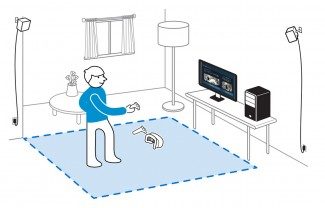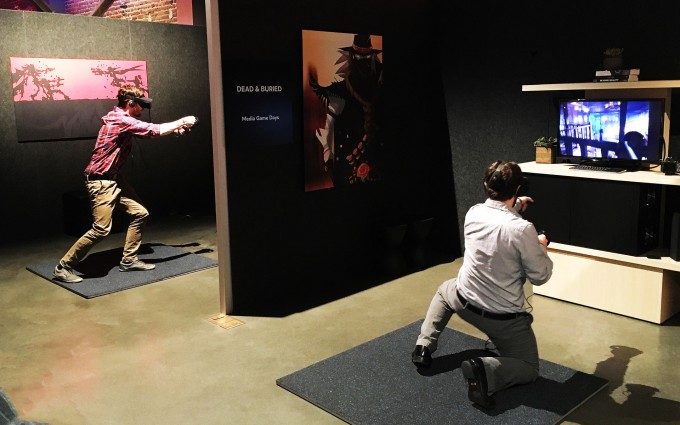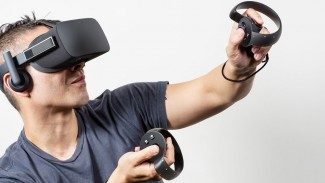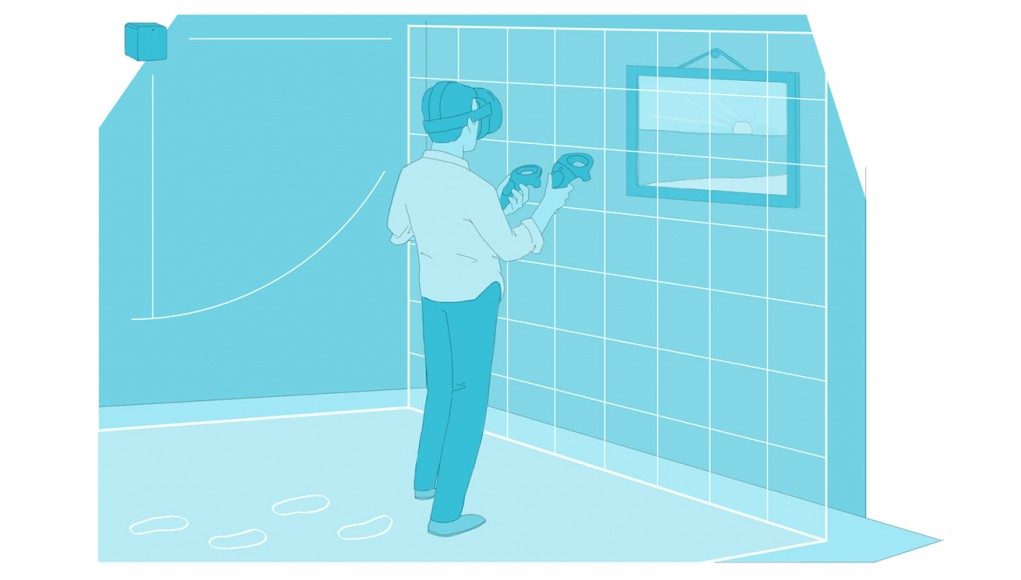Physically moving your body around to move through the virtual world is a great way to enhance immersion, but it can be potentially dangerous if users lose a sense of their real world surroundings. To keep users safe, Valve introduced what they call the ‘Chaperone’ for the HTC Vive headset, a virtual wall which appears when needed to keep users from exiting a safe playspace. Oculus is working on their own version of such a system which will be especially important for the upcoming launch of their Touch VR controllers.
The Chaperone system allows HTC Vive users to map out a safe area in the real world which will be reflected in the virtual world to keep them from walking into walls or swinging their hands into furniture. Chaperone on the Vive has been unquestionably effective, working well enough that users can lose themselves in the virtual world without fear of running into the physical one.

The idea of a virtual boundary to keep the user inside a real-world safezone isn’t radical, but it’s not something Oculus has talked much about up to this point. With the impending launch of the Touch VR controller coming by year’s end, implementation of such a system is critical.
As it turns out, Oculus has had a boundary system in the works for some time. I saw a brief glimpse of it for the first time at a conference in June where Oculus was showing off their Touch controllers.
It was after a four player match of Dead & Buried; Palmer Luckey, the founder of Oculus, pulled me aside and asked if I had noticed anything peculiar about this particular build of the game. After saying I hadn’t, he urged me to put the headset back on and then walk to my left. After few steps I saw a horizontal floating line appear in front of me about stomach-height. As I traced it with my eyes to the left, I could see that it encompassed me entirely, appearing like a square with rounded corners.

Interestingly, this boundary wasn’t actually just a line; it appeared as a piece of barbed wire, fitting with Dead & Buried’s Western aesthetic. This suggests of course that developers may have the ability to style the Oculus boundary system to suit their game. Chaperone on the HTC Vive, on the other hand, can be customized by the user, but I haven’t ever seen it styled on a developer controlled, per-application basis.

While we’d expect the Oculus boundary system to initially launch with the Touch VR controllers (given that it will mean the move from seated to standing VR for many users), it’s reasonable to think that the system might be useful even for seated VR experiences which use a standalone headset. I’ve seen people immersed in a seated VR experience bump their headsets on a desk (and done it myself plenty of times).
While we’re likely to hear more about Oculus’ boundary system at the company’s ‘Connect’ developer conference this October, one major unanswered question is whether or not Valve’s pending patent for Chaperone (or more specifically, “Sensory feedback systems and methods for guiding users in virtual reality environments“) might present any issue to Oculus if it were to be granted. Interestingly, Valve’s own Chaperone system actually already works with the Rift for users who have the headset connected to Steam.







